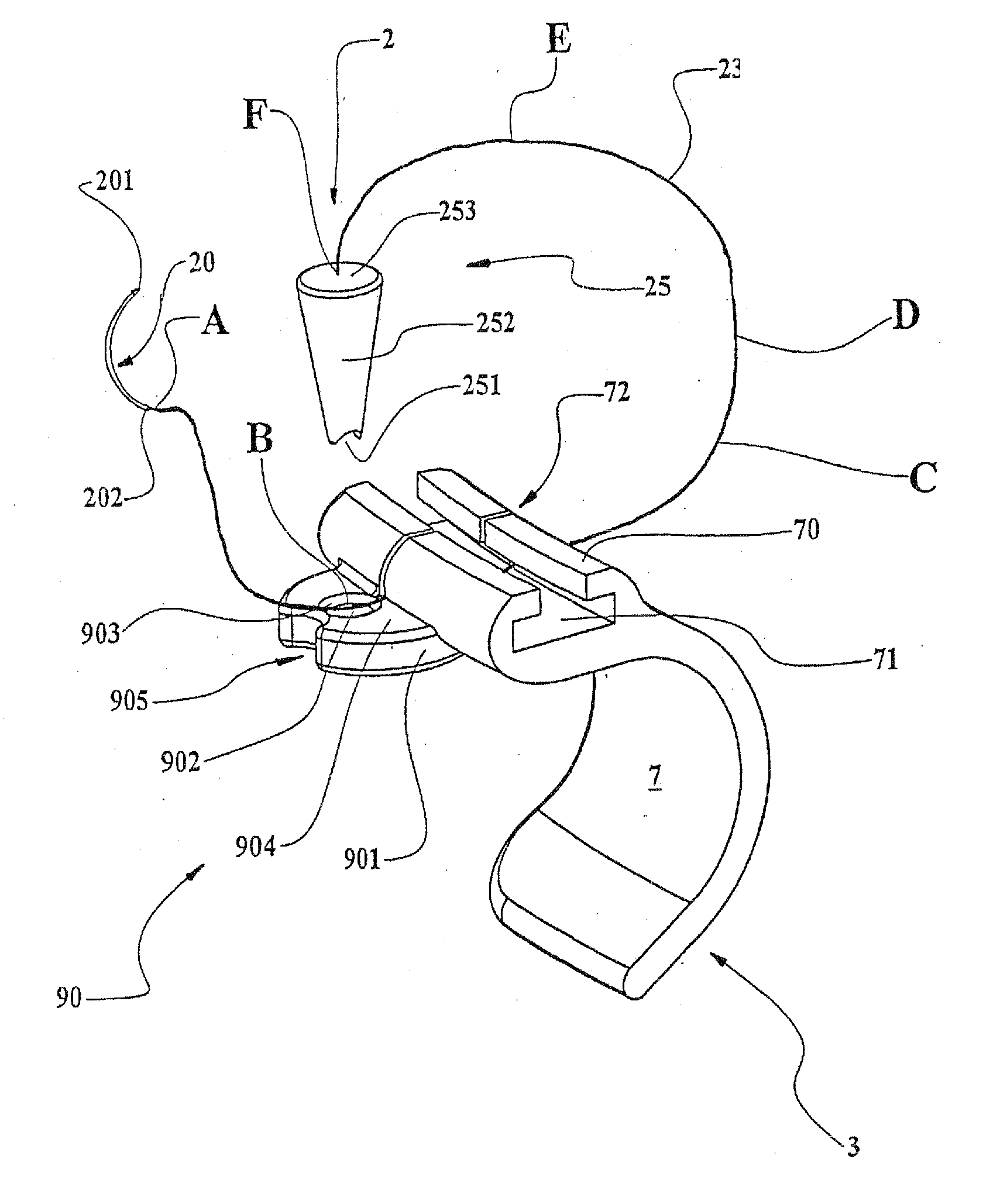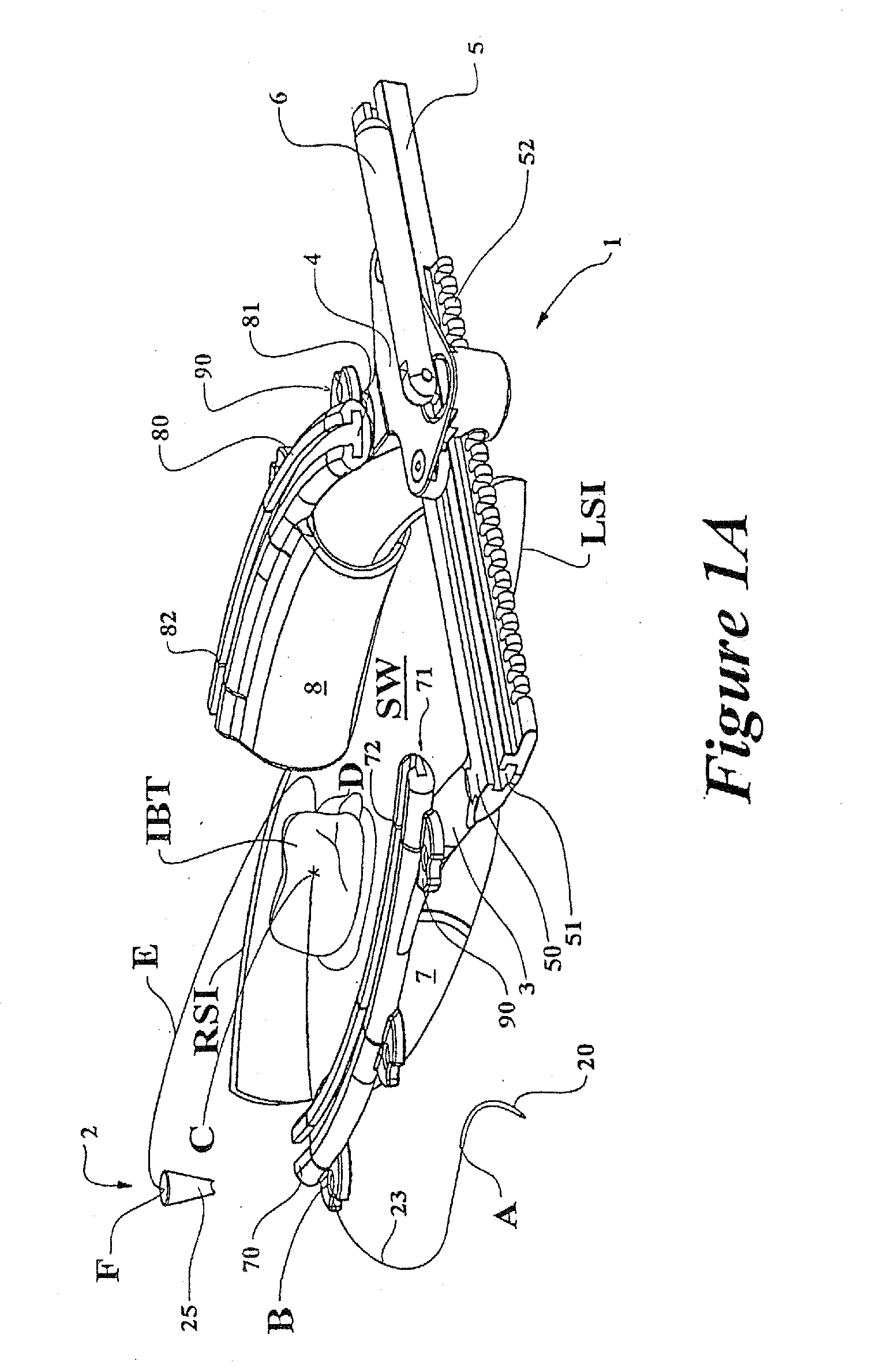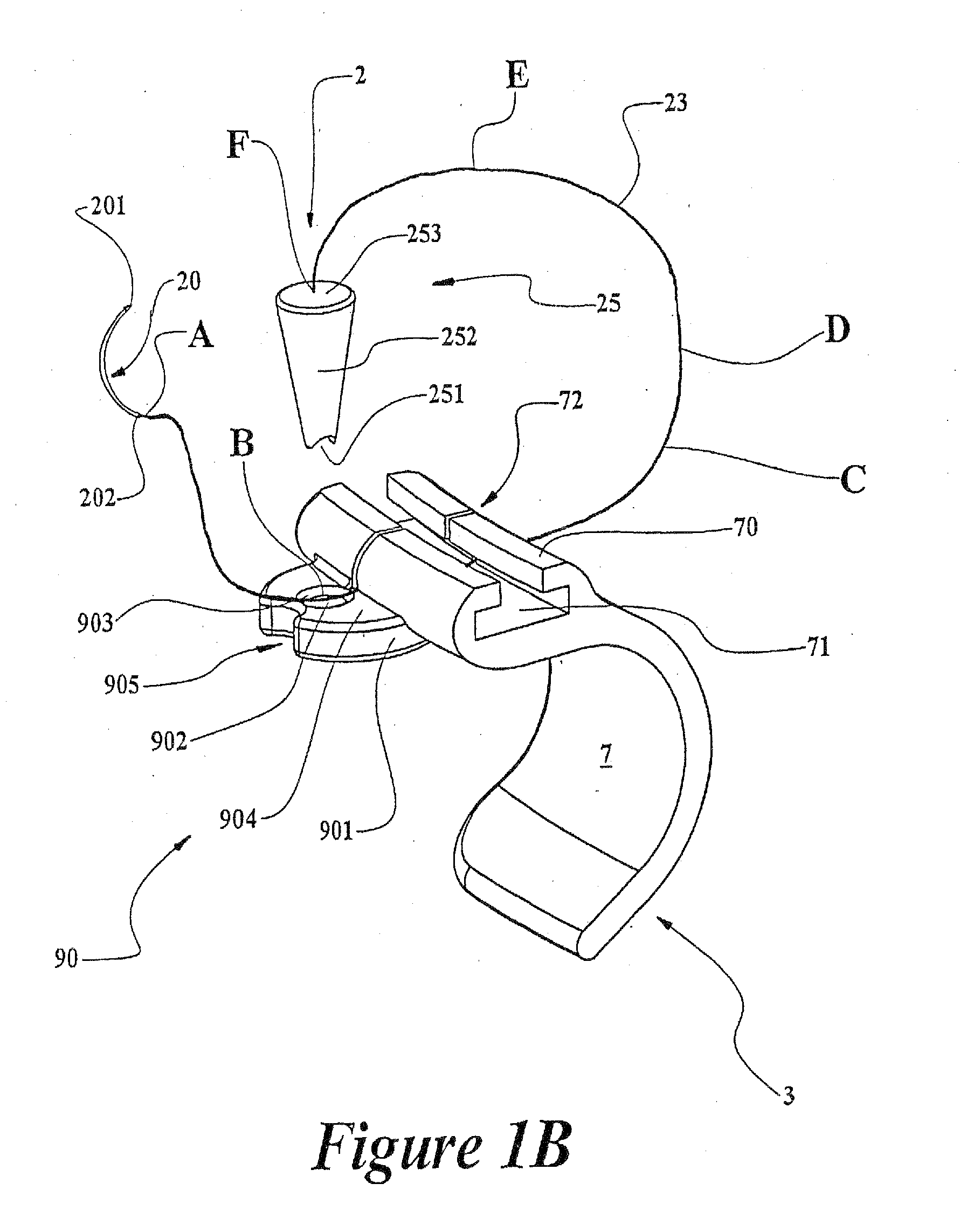Suture retention device
a technology of suture and retaining device, which is applied in the field of surgical equipment, can solve the problems of affecting the deployment or readjustment of peripheral devices, affecting the effect of peripheral devices, and consuming time, and achieves the effect of reducing the likelihood of induction
- Summary
- Abstract
- Description
- Claims
- Application Information
AI Technical Summary
Benefits of technology
Problems solved by technology
Method used
Image
Examples
first embodiment
[0064] In this first embodiment, as further illustrated in FIGS. 1B-1D, the anchoring port 90 is illustrated as being integral with the retractor arms 3, such as a cast boss, a brazed-on boss or a welded-on boss. Alternatively, the anchoring port 90 may also be a separate component that is mechanically fastened to the retractor arm 3 (or 4) by a variety of conventional fastening methods, such as bolting or riveting, in a manner that renders it fixed relative to the sternum retractor arm 3 (or 4) on which it is assembled, at least for the duration of the surgical intervention for which tissue retraction is performed. The anchoring port 90 in this embodiment is a substantially cantilevered fitting 901, disposed laterally outwards from the arcuate curvature of retractor arm 3 or 4, its top face 904 preferably having a substantially horizontal orientation when sternum retractor 1 is deployed in the patient. An aperture 902, preferably a through hole, is configured in the center of fitti...
second embodiment
[0092]FIG. 5B illustrates a fully engaged tissue retractor 12 within wedge shaped aperture 914, according to a first preferred method of deployment. As previously explained, the anchoring plug 34 may be manufactured in a material or design that makes it at least partially malleable or partially elastic to tend to improve its conformity to cooperating faces 911 and its compliance around the engaged suture line that it will pinch against faces 911. In broad terms, this preferred method deployment for this second embodiment according to the present invention, consists of:
[0093] a) piercing the internal body tissue IBT with needle 20 and threading a length AC of suture line 23 through said internal body tissue IBT;
[0094] b) retracting pierced internal body tissue IBT by simultaneously pulling on both lengths AC and DF of suture line 23;
[0095] c) selecting the most convenient anchoring port 91 from the plurality disposed around sternum retractor 1, estimating the required location of a...
third embodiment
[0111] In broad terms, the method of deployment for this third embodiment according to the present invention, consists of:
[0112] a) piercing the internal body tissue IBT with needle 20 and threading a length AC of suture line 23 through said internal body tissue IBT;
[0113] b) simultaneously inserting both lengths AC and DF of suture line 23 firstly in slit-like channel 72 and secondly in between pinch roller 934 and traction roller 93;
[0114] c) grasping both lengths AC and DF of suture line 23, in the vicinity of point A and point F, and retracting pierced internal body tissue IBT by pulling simultaneously both said lengths longitudinally outward through slit-like channel 72 while all the time maintaining suture-line lengths in contact with pinch roller 934 by laterally loading said suture lines against said pinch roller during the said pulling action;
[0115] d) once the desired internal body tissue IBT retraction or internal body tissue IBT displacement is obtained, displace the ...
PUM
 Login to View More
Login to View More Abstract
Description
Claims
Application Information
 Login to View More
Login to View More - R&D Engineer
- R&D Manager
- IP Professional
- Industry Leading Data Capabilities
- Powerful AI technology
- Patent DNA Extraction
Browse by: Latest US Patents, China's latest patents, Technical Efficacy Thesaurus, Application Domain, Technology Topic, Popular Technical Reports.
© 2024 PatSnap. All rights reserved.Legal|Privacy policy|Modern Slavery Act Transparency Statement|Sitemap|About US| Contact US: help@patsnap.com










